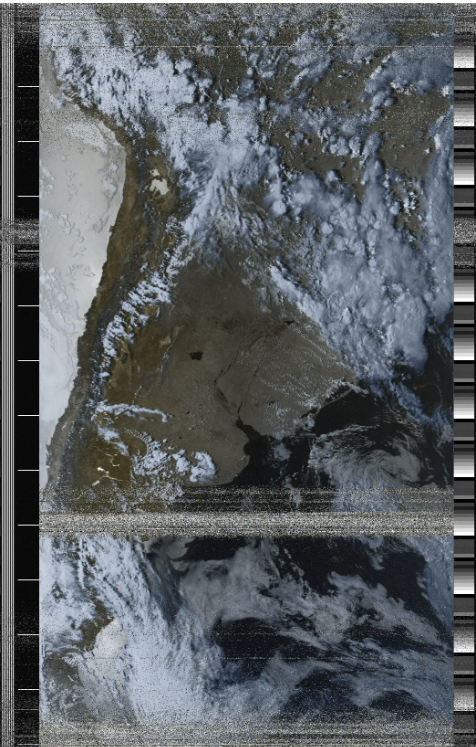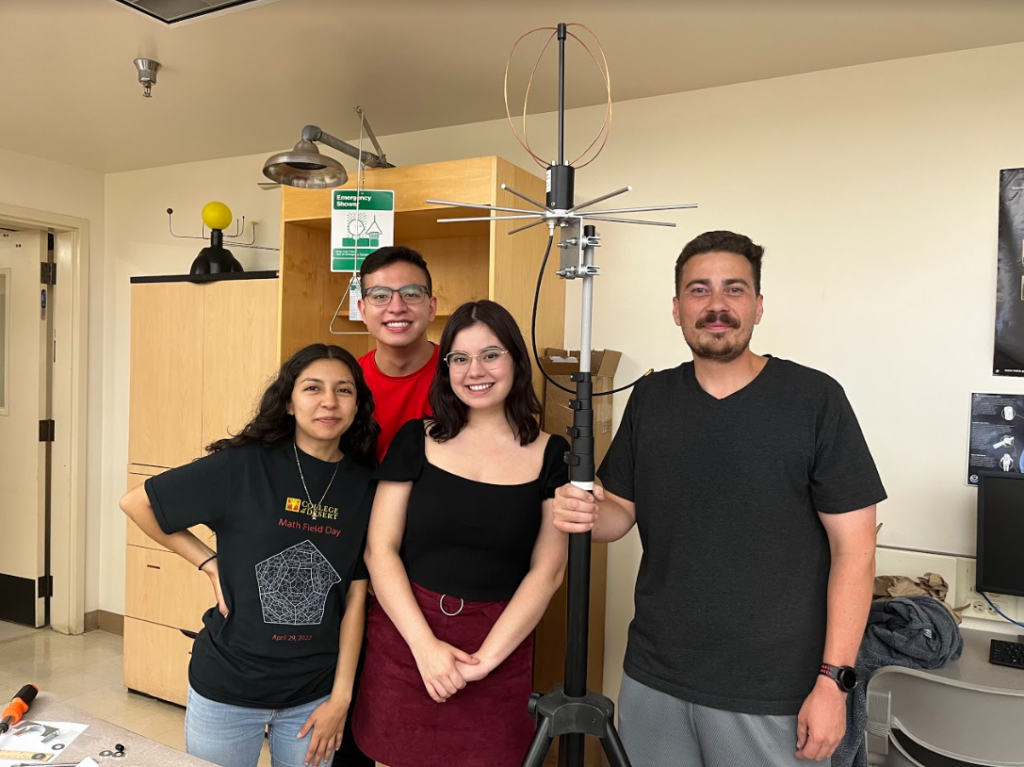I was given the opportunity to develop the ground station for College of the Desert. I researched various designs and read several white papers to identify the proper components required for satellite communications. After the research phase, I wrote a proposal and determined the budget for the station. My approach was to future proof our station such that we can add components as needed, while still have meeting the current requirements to operate in the VHF and UHF frequency band. The main idea in wireless communications is to be able to capture a signal through an antenna, digitize that signal, and decode the signal using the appropriate hardware and software. Once decoded, we have the data sent in a usable format. Take for example automatic picture transmission encoding done by the NOAA weather satellites. A picture is encoded, sent down from the satellite, received by our antenna, digitized by our equipment and then decoded using an APT decoder. We can then see the image that was sent.


In order to future proof our setup I chose to use a software defined radio instead of the traditional transceiver used to for radio communications. A transceiver is a device that contains all of the necessary components such as low noise amplifiers for receiving signals and transmit power amps for sending signals. They also have the ability to decode the data. Simply hook an appropriate antenna up to the transceiver and one can communicate with satellites. The primary reason for choosing the SDR over the transceiver is that transceivers are designed to operate within a specific frequency band, such as ultra-high frequency (UHF). Satellites communicate in a wide frequency range. The SDR also operates over a very wide frequency range, up to 6 gigahertz. The other primary reason to use the SDR instead, is that a transceiver is limited to the decoding schemes built into the unit, at the time of purchase. An SDR utilizes a computer for decoding, and often times, new schemes can be accounted for through open-source software developers. Take for example GNU radio, an open-source library that can decode various communication signals.
After I made the determination for the SDR, I sourced the appropriate antenna. The antenna I chose gave us a good starting point. It is important to know that antennas are the limiting factor in the sense that they are designed for a specific frequency range. Knowing this, I researched what range would give us the best opportunity to communicate with satellites. This happened to be the VHF and UHF frequency ranges. A majority of amateur satellites are broadcasting in this range, including cube satellites. Once I found the antenna, I found a matching low noise amplifier for the operation range. The amplifier also had a filter integrated to remove signal noise from our surroundings.

Upon approval from the College, I proceeded to work with a team of students in building the physical ground station. We learned how to work the accompanying software, and even intercepted radio communications that bounced of the International Space Station as it flew overhead. We also received images from the NOAA weather satellites as they flew overhead. We were finally able to use our ground station in conjunction with our cube satellite project to receive time and GPS data from the cube sat while it was travelling through the stratosphere.

Leave a Reply